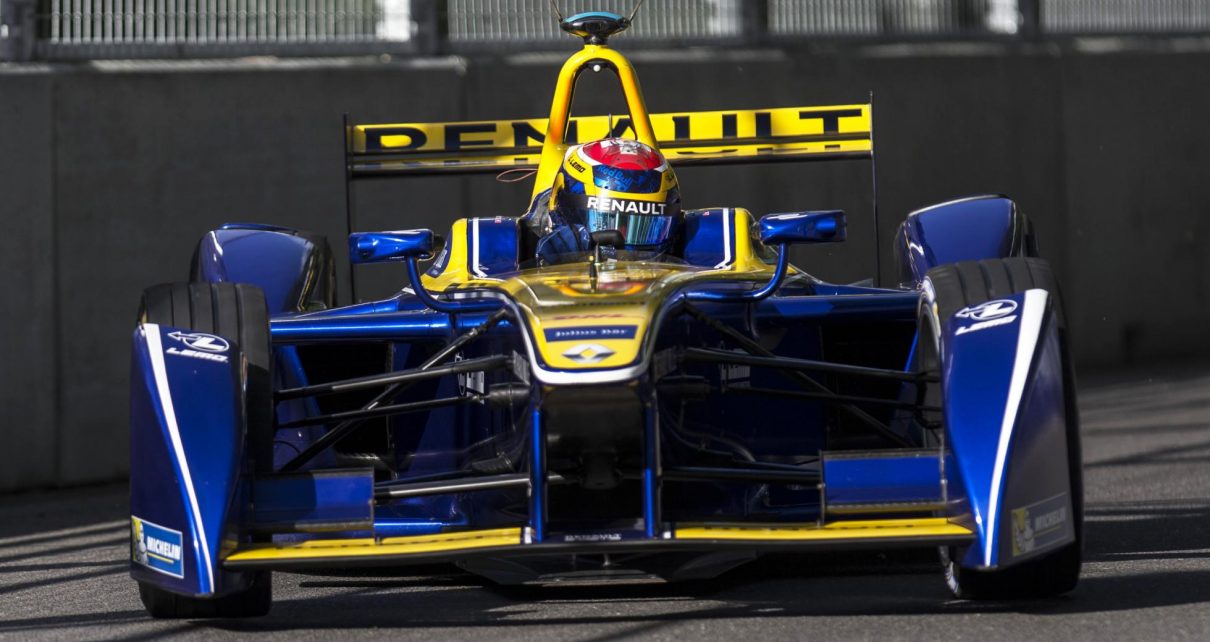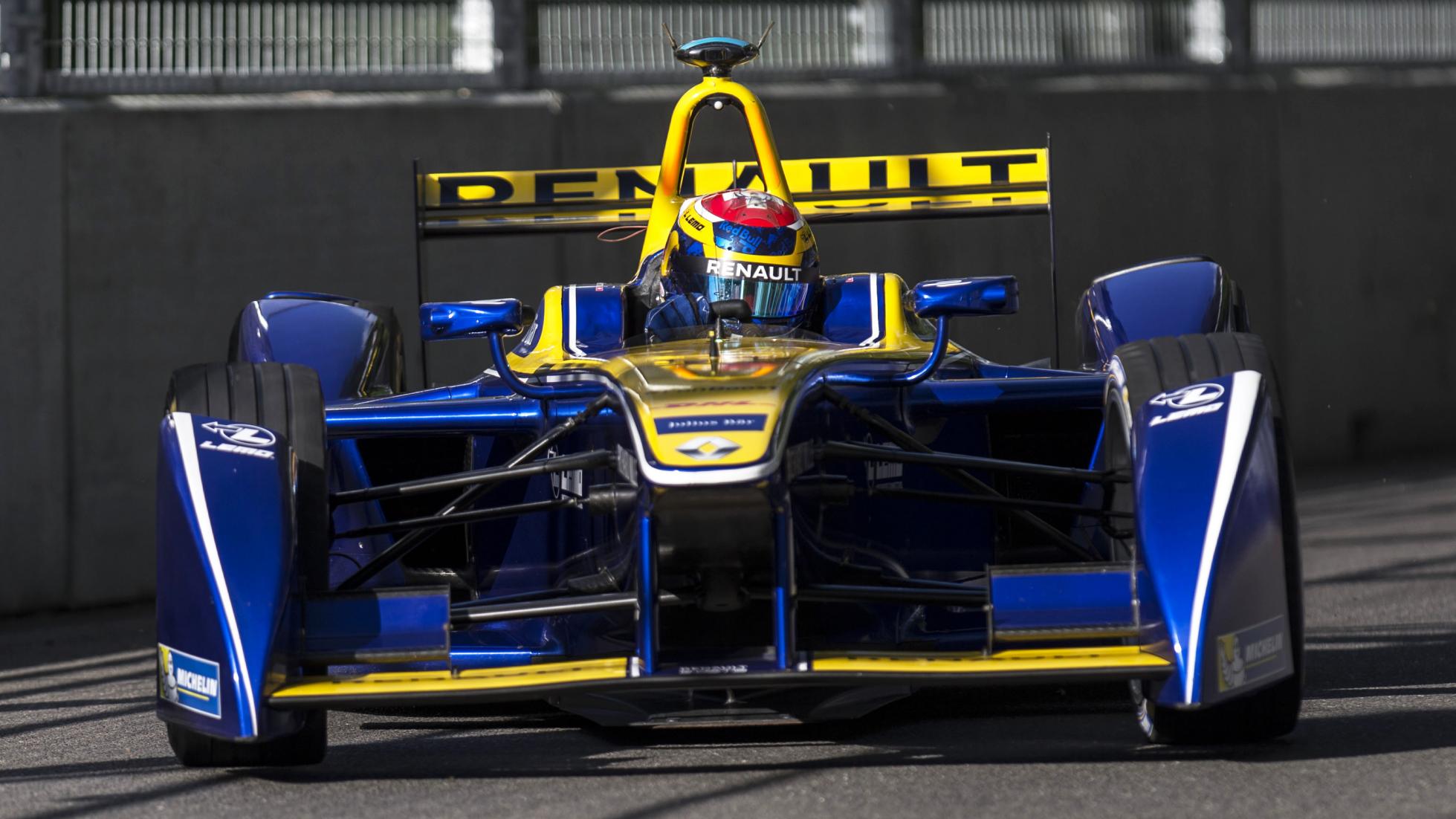A collision between the two drivers just moments after lights out left them out of contention for the race win, but having lined up on the grid level on points, the pair were left to settle the championship by fighting for the two bonus points that came with setting the fastest lap of the race.
Buemi eventually prevailed with a time of 1:24.150s, allowing him to succeed maiden champion Nelson Piquet Jr despite finishing 12 laps down on race winner Nico Prost.
His victory rounds off a mixed year for the series, which was rocked by the cancellation of June’s Russian ePrix after organisational problems forced the FIA to abandon the event.
While the last-minute calendar change reflects rather poorly on the sport, it would be wrong to say that Formula E is struggling to establish itself. Pending final approval, next year’s finale will take place in New York, while additional races are planned for Hong Kong, Marrakech and Montreal next season.
So is EV racing here to stay, or will it simply fizzle out?
Well, as a certain Mr Rory Reid demonstrated on TGTV a couple of weeks ago, electric technology is gradually approaching the point where it can begin to challenge the market dominance of the internal combustion engine.
That means major manufacturers will be pushing like crazy to build electric cars that meet that demand, whenever it kicks in.
And if you’re looking to push the boundaries of technology, motorsport is a great avenue in which to pursue those developments.
“The main thing that we are understanding right now that is that what is going into mass production in terms of technology is clearly a generation behind what goes into a racing car,” says Dr Pawan Goenka, Executive Director at Mahindra. “In a racing car you are not so concerned about affordability or cost. It doesn’t have to last four or five years, it has to last for one hour. You take that technology and you make it reliable, long-lasting and affordable for mass production road cars.”
So will participating in Formula E give the likes of Mahindra, Renault, Audi and Citroen an advantage further down the line? “Yes, undoubtedly,” answers Goenka. “Because the kind of consultants that you’re working with for Formula E are at the cutting edge.”
Currently drivers must change cars half way through each ePrix because the range doesn’t amount to a full race distance, although improvements to the batteries and energy recovery systems will mean each driver will need only one car after next season. Whichever way you look at it, that’s progress.
When the series began the teams were provided with identical vehicles, although as each season passes fewer and fewer components will be standardised. This season the competitors were allowed to design their own powertrains and gearboxes, with several solutions brought to the table.
“Some manufacturers went with a single, big motor, some went with two,” explains NextEV driver Nelson Piquet Jr. “Some people went with different gears, some people went with single gears. There’s all kinds of different builds that the manufacturers have been creating.”
It’s the kind of environment that will give carmakers invaluable knowledge when it comes to building road-going vehicles further down the line.
Away from the technical side though, there are issues that the sport will have to address. Some of those aspects are a natural consequence of being a fledgling series, others are less so.









